Eoul
"When I first came to the Feylands—as a much younger man—I had much to learn and much to be fascinated about. However, nothing came quite as close to my amazement at seeing the skies riddled with beads of color, every minute to every hour of every day, and shining so especially during the nighttime. Yet, these were not stars. No, not stars as we in Varia have come to know those distant specks of light. The stars of the Feylands were alive. They are known as the Eouli, living masses of light. And, I would later learn that these marvelous creatures existed beyond just the skies, for whether in earth or sea, they acted as testament to the eternal mystique of the Feylands."
Eoul (/ ēo͞ol /, meaning "star" in Sylvan5 ), or eouli (/ ēo͞olē/ ) for plural, is a species of magical bioluminescent fey creatures found throughout the continent of the Feylands in Zentrem. Eouli absorb magical energy from their surroundings and use the energy to continuously emit light.6 The emanated light can appear as white or range from any color on the visible spectrum.7
Four major subtypes of the eoul exist throughout the entirety of the Feylands: el-eoul (/ el-ēo͞ol /), maen-eoul (/ mān-ēo͞ol /), buir-aed (/ bwir-ed / ), and oirte-aed (/ wôrt-ed / ).8 The main differentiation between the subspecies stems from the environments that each may predominantly inhabit. All types of eoul appear only in areas containing high levels of ambient magical energy.
Origins & History
Eouli have existed in the Feylands since the earliest records of the continent's sapient denizens. Their exact origins remain unknown and pose a point of healthy debate amongst scholars. Identified as fey, the eouli possibly appeared in Zentrem thousands, if not tens of thousands, of years ago. They purportedly came at the time that extraplanar creatures from the Feywilds9, and possible other realms, settled in the areas that became the Feylands. However, individuals who have traveled between the planes claim that no identical creature to the eoul exists in the Feywilds, at least to present knowledge.10 More than likely, explorers have yet to search the entirety of the Feywilds, providing no complete substantiation to the assertions.Some native Feylanders believe that the eouli spawned within Zentrem. One popular theory of the Feylands' creation states that a massive outpouring of magical energy over the entire continent warped the regions into their present known states. As part of this possible event, two theories arose regarding the origins of the eoul: one, the sheer influx of magical energy simply created new life and the eoul numbered among those species; two, the eoul may have once been a native species of the continent, possibly a relative of bioluminescent insects like the firefly, and subsequently experienced extreme changes due to the influx of magic in its environment. In the latter hypothesis, the alterations to the eoul's anatomy would have had to apply across the entire species, for beyond their various subtypes, eouli have not displayed any significant evolutionary adaptations over the millennia nor branched off into any child species.
Regardless of the uncertainty regarding the eoul's origins, many Feylanders consider eouli as iconic of the living magical environment fostered within the continent. The eouli's seeming ubiquity and timelessness as a species has led to their reasonable prominence throughout the societies of the Feylands. From a practical standpoint, their provision of magical light has seen applications throughout the existence of the continent's many civilizations. Arguably more so than any other creature in the Feylands, the sheer beauty brought about by eouli have become the subject of many works of literature and art. Thus, harming eouli in any way or form is considered a cultural taboo with the most superstitious claiming it draws misfortune. Reverence for the eouli extends to tribal communities who have integrated the species into their folklore as well as consume deceased eouli cores, which are scavenged and not hunted.
Basic Information
Anatomy
An eoul does not require air or water to survive. Instead, multitudes of thick, hairlike structures called cil’lic (/ ˈsil-lik /, meaning "hair threads" in Sylvan) cover the surface of its main body. The cil'lic are responsible for the absorption of magical energies from the eoul's environment. As a byproduct of this absorption, eouli also possess the ability of magical flight and unhampered movement regardless of terrain type.
Core Tint, Colouring, and Marking
Eouli's cores, along with the cil’lic, can vary in color between subspecies. Some possess solid coloration while others sport blends or gradients. Furthermore, an eoul's emanated light reflects only the general coloration of its core and does not project patterns or markings.- El-eoul
- El-eouli exhibit the widest variety of core appearances. Their coloration ranges across the entire visible spectrum, reflecting in the light they emit over the Feylands' skies. However, el-eouli most commonly appear in reds, pinks, and purples. They can also exhibit multi-coloration, resulting in splotches and gradients on their cores. In much rarer cases, they may show more consistent patterns, like dots or stripes.
- Maen-eoul
- Maen-eouli cores appear in white to blue colorations, often displaying gradients of their main color. They do not display any other patterns or markings.
- Buir-aed
- The colors of Buir-aedi cores span the entire visible spectrum. They manifest only in solid colors.
- Oirte-aed
- Oirte-aedi cores appear in shades of red or blue. They can also sport markings and patterns that match their surrounding flora.
Biological Traits
Genetics and Reproduction
"During my stay in the Gustpeaks, I had the awesome experience of witnessing vaeil'eouli coming together to form an infant core. If not for my own perceptiveness, I may have overlooked the matter, for it occurred in the skies where at least hundreds of el-eouli floated and illuminated. . . Small strips of callous flesh-like material floated among the many lights, at first seemingly at their own pace. Then within minutes, they coalesced, compacting and folding into each other to form what appeared to be a peach pit."
Furthermore, the actual act of reproduction seems randomly occurring. Though, constants have been observed:
- Multiple eouli must contribute to the creation of a new eoul, so a singular eoul cannot produce new eouli on its own.
- A single eoul may produce multiple vail’eoul to aid in the fusion of several eouli cores.
- An area with denser eoul populations produce new eoul at a quicker and more constant rate.
- Vail'eoul from different eoul subspecies may fuse to form a core. In this case, chance ultimately determines a particular eoul's subspecies, though the environmental factors and the concentration of a certain type of vaeil'eoul seems to influence the odds. For example, a core fused underwater from mostly maen-eoul vaeil'eoul will probably produce a maen-eoul. However, a core fused in the open air of a forested area may result in either an el-eoul or oirte-aed.
- Most importantly, eouli do not form in areas devoid of magical energy.
Growth Rate & Stages
". . . In all instances that I have observed, the eouli have proved mindless, albeit very beautiful, creatures. Yet, when it comes to the honing of their young, some instinctual drive brings them together into a singular, fantastic entity. Perhaps there is something self-serving to the act considering their natures as magical siphons. . . I would very much like to think that this behavior confirms an intrinsic desire to protect and nurture life present amongst all species, regardless of present mental acuity."
A fully developed eoul does not typically experience any other natural changes. Most eouli, regardless of subtype, continue to emanate light for the remainder of their lifespans. The lack of distinct internal anatomy has made it difficult for scholars to discern how or why an eoul eventually dies. One theory proposes that an eoul possesses a life force which fuels its magical absorption, and thus its most basic form of survival; the continuous absorption and conversion of magical energy into light gradually depletes its life. Regardless of the exact semantics to its existence, the end to an eoul’s life cycle is often sudden. The eoul simply ceases to emanate light, akin to a torch suddenly being extinguished, rather than gradually dim. Afterwards, the then exposed core decays. Buir-aedi and maen-eouli are the longest lived of the species, averaging total lifespans of at least 100 and 75 years, respectively. The more prolific el-eouli live for about 50 years while oirte-aedi live for 40 years at the most.
Ecology and Habitats
Dietary Needs and Habits
Biological Cycle
El-eoul
During the daytime, el-eouli typically emit colored light. In night time, these eouli sometimes default to a white light, often leading them to be mistaken for stars by foreigners in the Feylands.Maen-eoul
Maen-eouli radiate a steady white light while submerged in water. Due to shifting tides, a maen-eoul may breach the surface of the water, and change its emitted light to reflect the coloration of its core instead. Otherwise, this sub-type does not exhibit any notable changes due to the passage of time.Buir-aed
Buir-aedi do not have distinct biological cycles.Oirte-aed
Due to the almost inconsistent nature of some areas in the Feylands, the biological cycle of oirte-aedi depend on changes in its host flora. Oirte-aedi indefinitely emit distinct red or blue light. When its host and surrounding plant life enter their reproductive or growth stages, an oirte-aed increases the intensity of its emanated light. Outside of this period, oirte-aedi typically shed light at lower intensities.Additional Information
Domestication
In extremely rare cases, an eoul may develop limited telepathic abilities, becoming able to sense other creatures’ thoughts and emotional states. The factors leading to such occurrences remain unknown, though it more than likely happens during an eoul's early development. For telepathic eouli, their abilities allow them to gradually attain sentience. A telepathic eoul may also establish a bond with another living being, typically sentient and, more often than not, humanoid.
For an eoul to form a bond, it must first become attracted to a prospective creature, often through its telepathic senses. There is no exact measure for how eouli choose their bond-mate, though presumably, creatures that exhibit particularly strong emotions or intent more likely catch the attention of telepathic eouli. After the initial choice, the eoul will attempt to make physical contact with the creature; the bond becomes official after this step's completion, though an indication of the fact does not usually appear immediately.
After the creation of a bond, an eoul attains the basest level of sentience. The eoul will proceed to grow on multiple fronts over the course of its relationship, and it maintains an intimate link to its bond-mate's mental and emotional states. For example, the link affords the eoul greater mental development through gathered experiences and possibly even to the point of sapience. Bonded eouli may come to learn and understand languages known by its bond-mate, though may recognize others through continuous exposure. The most advanced eouli can even attempt communication by altering their emanated light as signals where they lack the anatomy for generating sounds. An eoul will take all possible measures to remain in proximity to its bonded creature, though a more intelligent eoul may refrain from doing so due to instructions from its bond-mate or unfavorable circumstances.
Furthermore, a bonded eoul may also experience physical changes, such as an increase in its core's size. More notably, bonded eouli gain the ability to alter the color and the appearance of their emanated light. Some of them emulate the appearance of their bond-mate while others adopt unique forms based on observations; the common factor among bonded eouli's appearances being that they diverge from the generally amorphous forms of their unbonded kin. Bonding also renders an eoul more vulnerable; regardless of a bonded eoul's subspecies, their core remains in a semi-corporeal state over the course of the relationship.
In return, the bond-mate gains the company and service of the eoul. While an eoul is limited in its physical options, proper training can make a bonded eoul an effective scout due to its small size and excellent movement. Otherwise, the creature attains the unfaltering loyalty and affection of the eoul. Furthermore, the bond seems to allow a creature to approach other eouli, even non-sentient ones, without them moving away. It is unknown if a creature can form bonds with multiple eouli.
Uses, Products & Exploitation
Intelligent underwater creatures utilize maen-eoul as living markers for navigation purposes because they usually remain at the same location for the duration of their life cycles. Buir-aedi still partly embedded in rocks can be collected and used as resourceless, portable light sources. To do so, the rock with the attached buir-aed is chiseled away to a smaller, portable block; the rock then goes through a smoothening process that turns it into a "light stone" before being distributed for use. Settlements may also relocate discovered oirte-aedi, along with its host, to act as a source of nourishment for plant life in domesticated gardens and farms. Aed harvesters, as individuals who seek out these types of eouli are known, wear protective eyewear to prevent lingering complications with their sight as a result of the eouli's blinding defense mechanisms.
Though difficult to find and contain, eoul cores serve as a consumable item to some humanoid populations in the Feylands. More often than not, eoul cores are scavenged after their death, during its period of decay. Certain communities believe eoul cores possess healing and other magical properties that improve one's abilities, though these claims do not have evidential proof. Consumption of eoul cores is typically associated with tribal settlements.
Geographic Origin and Distribution
Furthermore, the Feylands' distinct biomes lend themselves to house certain subspecies over others.13
- El-eoul
- These type of eoul are the most populous of all the species, based on observations of their appearances. They dot the skies over the Feylands and can virtually appear in any areas with open air. Compared to other subspecies, el-eouli are more likely to move to different areas. They possess no real patterns of migration and more than likely follow wind currents. For example, el-eouli have been witnessed hovering just above forest floors or over the surfaces of bodies of water. As an overview, el-eouli have the evenest distribution of all the eouli throughout the Feylands. However, in the region of the Gustpeaks, they sport particularly high populations.
- Maen-eoul
- Maen-eouli inhabit the various landlocked lakes, seas, and bodies of water connecting to the continent to the surrounding oceans. However, these eouli are particularly prolific in the Cascades, the south-central region of the Feylands known for its flooded areas and subaquatic environments.
- Buir-aed
- Buir-aedi may be found in any place sporting formations of rocks and similar materials. The regions encompassing the Dustdoms, the Obsidian Glades, and the Grimwilds contain the highest observed populations of buir-aedi. However, the nature of subterranean exploration is limited beyond the aforementioned areas, which may influence estimations of perceived geographic distributions.
- Oirte-aed
- Oirte-aedi are the least occurring types of the species, though they appear in more areas than any other eoul subspecies aside from the el-eouli. With flora present throughout the major regions of the Feylands (the notable exception being the Obsidian Glades), oirte-aedi have the potential to appear almost anywhere on the continent. Out of all these areas, the Evergreens, whose lands host swathes of contiguous forests, have shown the highest population densities for oirte-aedi.
Average Intelligence
Perception and Sensory Capabilities
Some eouli possess the magical ability to telepathically sense surrounding creatures' emotions and intentions, if not thoughts. These talents manifest once every ten thousand eouli and is primarily observed during an eouli’s bonding process with a sentient creature.
Intraspecies Interactions
Eouli do not establish territorial boundaries with each other, more than likely due to their ever present source of sustenance and reliance on proximity for reproduction. Due to their widespread populations, el-eouli live in massive communities in the skies or open air; the same extends to maen-eouli where the geography suits them. In areas where the regions coincide, it is even possible to have mixed communities, such as in the region of the Cascades where el-eouli may exist above the surfaces of the waters where maen-eouli reside. Buir-aedi and oirte-aedi prove comparatively solitary, though that may also stem from their higher rarities. It has been observed that these two eouli subspecies can appear in similar communities within a given area, numbers willing. When an eoul detects a threat and flares its light, surrounding eouli mimic the signal and spread, which can lead an entire community attempting to flash away the source of danger.Symbiotic and Parasitic organisms
"The gardens of the royal complex in Tahl'Rei included at least a dozen plants which hosted oirte-aedi. I suppose it was appropriate that such rare eouli would be gathered in the kingdom's most prestigious and pristine garden. I had the great pleasure of being a guest at the palace and so could observe first hand the bounties of the oirte-aedi for days at a time. Living gems, indeed, an oirte-aed could shine brighter than any eoul during that region's springtime. Even beyond just the physical appearance and prolific growth of the surrounding flora, I could feel the aura of vibrancy from just being around an oirte-aed. While I had come to see many groves, gardens, woodlands, and the like as I traversed the Feylands, none had quite the level of liveliness and, somewhat ironically, natural charm as those groomed by so many oirte-aedi within the gardens of Tahl'Rei. . ."
Eouli conduct a passive pseudo-symbiotic relationship with its entire surroundings and those within. Most of the ambient magical energy within the Feylands appears naturally occurring; however, the creatures residing in the continent also passively exude their own magical energy that, while rarely notable on the individual scale, collectively provides further sustenance to the eouli.14 Then, when eouli absorb this magical energy, they convert it constantly into an inextinguishable light that may be utilized by other species.
Eouli do not take part in any known natural predation interactions beyond humanoids who scavenge for their remains. However, the varying eoul subspecies react to contact with other creatures differently. El-eouli will freely move away from unfamiliar creatures, meaning most non-eouli species. Maen-eouli have shown greater tolerance for other creatures in their proximity but will move if something attempts to move to close to their core area, despite their generally intangible states. The attached states of buir-aedi and oirte-aedi generally make movement impossible, though these creatures also indicate a similar tolerance towards proximity as maen-eouli. In the case of all eouli, the species as a whole possess the ability to flare their light and temporarily blind susceptible creatures, serving as their only known defense mechanism for possible threats.
In regards to each subspecies, el-eouli and buir-aed live as independent creatures, at most relying on an eoul cluster for early development. Some maen-eouli act as the center to communities of underwater-dwelling creatures, their light often serving as directional marks in the waters, but otherwise do not establish direct relationships with other species.
Oirte-aedi establish direct symbiotic relationships with the flora to which they attach. In this case, an oirte'aed's cil'lic clings onto the plant life; those cil'lic cease to solely absorb ambient magical energy and instead have a direct source through its attachment. In return, the oirte-aed exudes a more nourishing variation of its light that aids the growth of surrounding plant life. An oirte-aed separated from its host plant almost immediately dies, though the host usually remains unscathed.
Footnotes
1 Alexandre du Faeien, a famed scholar and mage, wrote Fantastic Fauna & Flora: An Anthology on the Inhabitants of the Feylands, an anthology on the creatures of the Feylands he encountered during his tour of the continent which lasted from 3306 3E to 3326 3E. The work proved one of the first of its kind, at least written by a native Varian, since traveling through the mystical continent was in itself a rare feat. While the accuracy of the work has been questioned, it has remained relatively popular work, lauded for its engaging style expression. Though the factual contents have been revised in later editions, du Faeien's travel logs and his reflections thereafter remain relatively untouched.2 Formal names for creatures of the Feylands combine a Sylvan species name preceded by a wider grouping name, usually in Elvish or Gnomish.
3 A unit of length measurement used in the Feylands; 1 sprig (spg) = 10 centimeters = approximately 4 inches.
4 A unit of weight measurement used in the Feylands; 1 earthful (efl) = 3 lb = approximately 1.4 kg.
5 Sylvan is the language of the Fey, originating from the planar realm of the Feywilds. It is commonly spoken amongst the more intelligent species of the Feylands and is considered one the primary language for naming and classification.
6 Magic in Varia enables many awesome feats which often lead to the bending of reality, though much remains unknown to its exact nature. Magical energy is one cumulative term for the power reserve used by mages and other creatures capable of manipulating magic. However, it can also refer to the seemingly omnipresent force that causes extraordinary events to occur in the world. Due to the fantastic nature of the Feylands, it is believed to possess higher levels of magical energy over the entire continent compared to the rest of Zentrem's major land masses.
7 Visible spectrum refers to the range of colors which most humanoid species can perceive. The base colors for the spectrum are red, orange, yellow, green, blue, and violet; however, the visible spectrum may also refer to a mixture of these colors.
8 The term used to refer to the latter two of these subspecies is aed (/ ed /, meaning "gem" in Sylvan), or aedi (/ edē /) for plural. Each eoul subspecies name translates into Varian common: el-eoul means "sky star"; maen-eoul means "water star"; buir-aed means "living gem"; oirte-aed means "seed gem."
9 The Feywilds refer to a plane of existence beyond the material plane where Zentrem lies. Known for being the native realm of fey creatures and its associations with rampant magic, the Feylands derives its name from this realm.
10 Interplanar travel, while possible, is an extremely rare feat in Zentrem conducted by only the most capable mages. Observations and statements made by extra-worldly individuals, who prove their ability to traverse the planes at least, are often regarded with great reverence, despite the limited channels in confirming their accuracy.
11 Sporogenesis means spore formation, exuded by plants and fungi for survival and reproductive purposes.
12 In limited cases, vail'eoul do not immediately disperse. While the remains of exposed buir-aed scatter into the air, the vaiel'eoul of buir-aedi completely embedded in surrounding rocks stay in pockets until possible changes in their environment release them into the surroundings. Also, an oirte-aed at the end of their lifespan typically detach from their host plant and decay separately. Otherwise, oirte-aedi who die because of their host’s death releases their vaeil’eoul into the surroundings.
13 The Feylands contains seven major regions, with each hosting a predominant type of biome: the Evergreens, the Gloommire, the Cascades, the Dustdoms, the Gustpeaks, the Obsidian Glades, and the Grimwilds. Slews of forests separated by grasslands encompass the Evergreens; the Gloommire contains mainly marshes and swamplands while the mainly watery regions of the south comprise the Cascades. The Gustpeaks account for the peaks of most of the continent’s mountain ranges in the far north. To the east of the Gustpeaks are the deserts of the Dustdoms, and farther west, the Obsidian Glades host continent’s volatile, volcanic regions. The Grimwilds account for the subterranean areas strewn across the entire continent.
14 It has been confirmed that all beings capable of magic passively exude magical energy in such minute amounts that most divination magic cannot detect it. Efforts have been put into its measurement. The amount of magical energy passively emitted by creatures within the Feylands compared to Varia shows a larger difference towards the former. It also becomes possible for an individual incapable of exuding magic to do so while in the Feylands, leading to another theory regarding the connection of magical energy to the purported life energy governing all living beings.
Maen-eoul
Buir-aed
Oirte-aed
- El-eoul: 50 years
Maen-eoul: 75+ years
Buir-aed: 100+ years
Oirte-aed: 25-40 years
Remove these ads. Join the Worldbuilders Guild
Eoul (Unbonded)
Living Light. An eoul sheds bright light in a 15-foot radius and dim light for an additional 15 feet. It sheds this light continuously until it dies or is incapacitated.
Magical Movement. An eoul is not inhibited by any form of difficult terrain.
Situational Incorporealness. While an eoul remains conscious and emits light, its core remains incorporeal and it has immunity to all damage.
Actions
Shine. The eoul shines its bodily light with greater intensity. Each creature within 30 feet of the eoul that can see it must make a DC 10 Constitution saving throw or be blinded until the end of its next turn.
Image Gallery
-
Beginning of a new eoul's life cycle
Contact Between Vaeil'eoul
Life, BirthVaeil'eoul from different eouli drift within several feet of each other and come together as the basis of a new eoul core.
-
7 to 10 years
Eoul Core Fusion
Surrounding magical energy compacts vaeil'eoul from multiple parent eouli into a singular entity, forming the new eoul core.
-
Up to 10 years after eoul core forms
Growth Stage Absorption
A newly formed eoul core absorbs ambient magical energy as its cil'lic grow out, until it can sustainably generate its own light. Surrounding eouli may form a raurm'eoul around the young eoul to hasten the process.
-
The eoul fully matures
Eoul Core Becomes Self-Sustaining
An eoul's cil'lic fully grow out and it becomes able to continuously emit its own light, signifying the end of its developmental stages. A rarum'eoul disperses from the newly matured eoul if one had formed around it.
-
Occurs only after an eoul fully matures
Variation: Eoul Bond Formation
Life, IdentityTelepathic eouli may form a bond with another creature. The bond initiates another developmental stage for an eoul wherein it grows both mentally and physically.
-
Varies by subspecies and bond status
End of an eoul's life cycle
Life, DeathAn eoul suddenly ceases to emanate light. Its body begins to decay and form vaeil'eoul which may form other eouli.
Comments
Author's Notes
This concept seemed kinda cute from the start, and a lot more lighthearted on the writing board than what I'd been writing about. I find that my writing style lends itself more towards informative articles, which I tried to continue into this one. However, I added some introductory flavor text to set the mood a bit, and I would be lying if I didn't say that my intended voice for this piece was that of a certain in-world scholar, observing these creatures. Also, any image that I did not create has denoted credits for them.

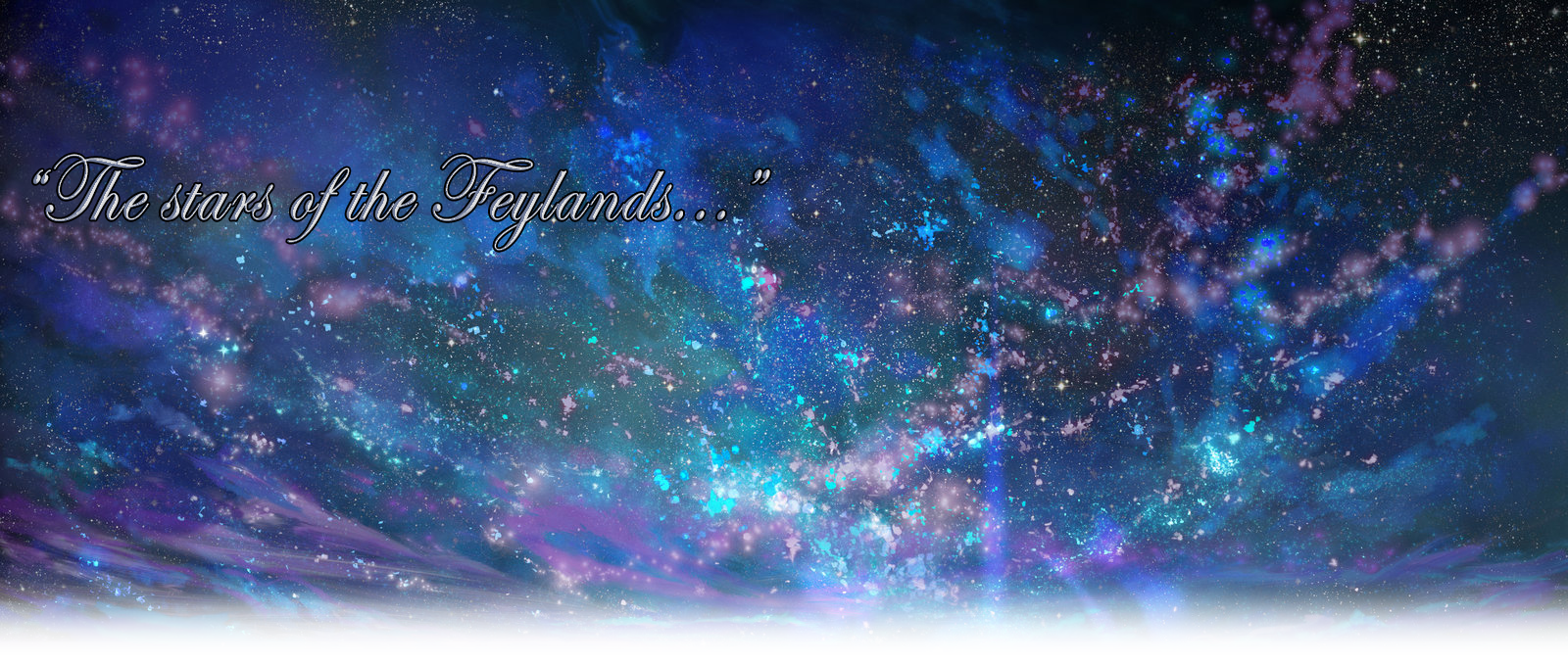
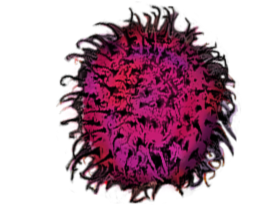
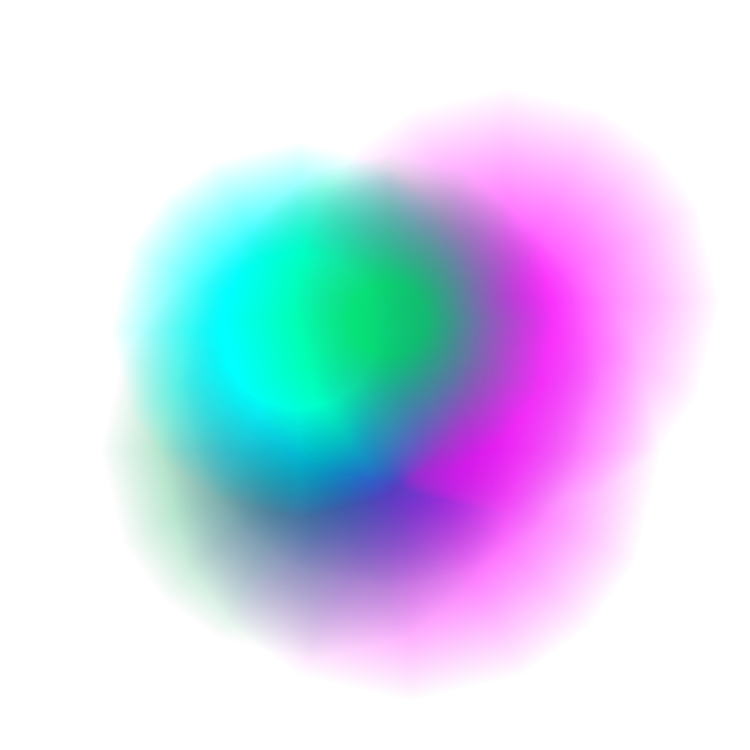

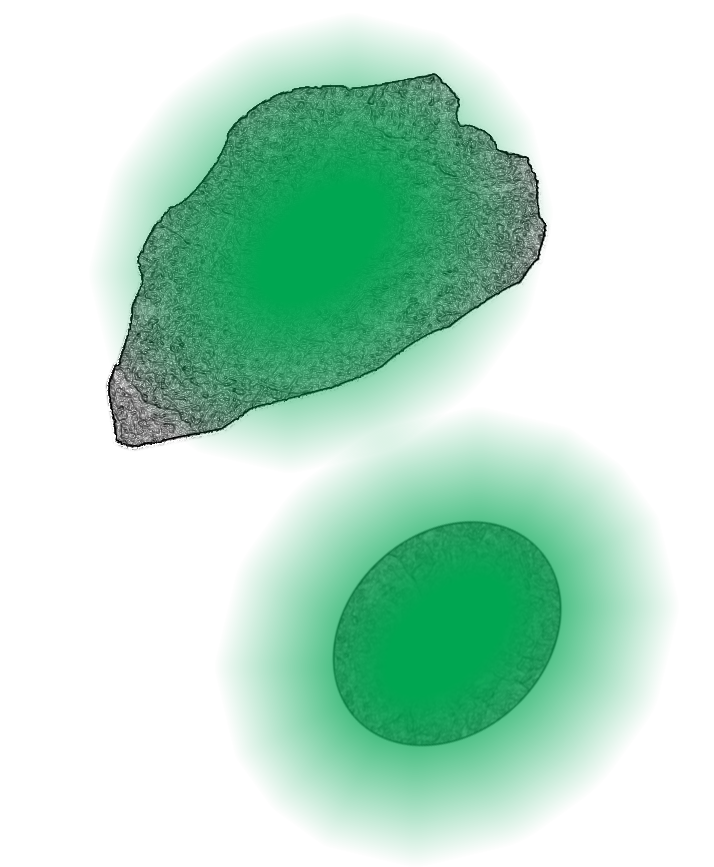
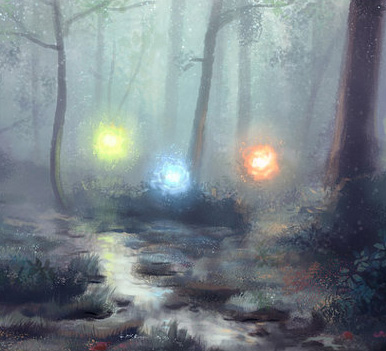








Really in-depth article! I love the illustrations and the layout to your article is on point! :D
Follow me on Bluesky for more pixel art :D